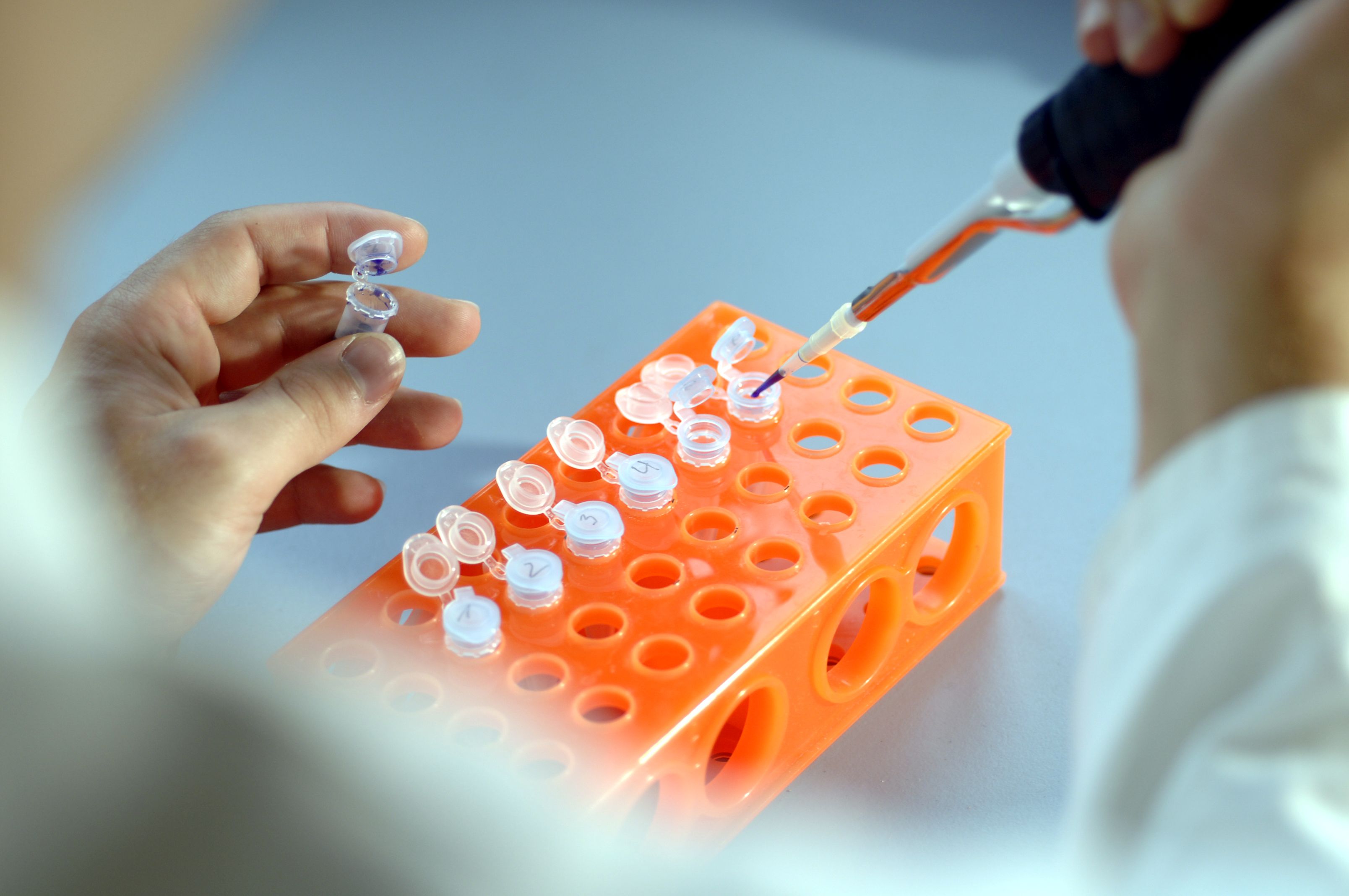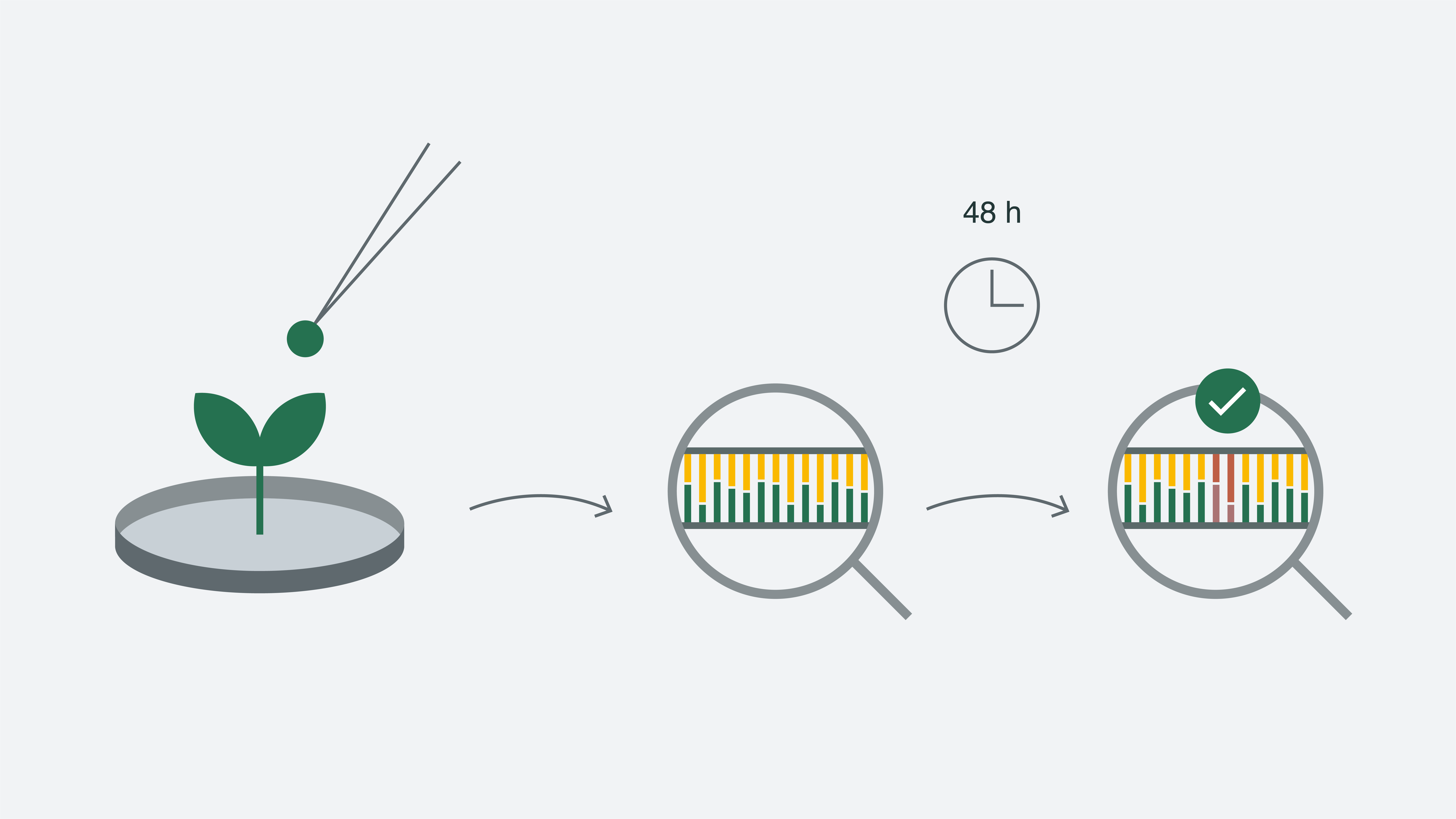Genome selection is a further development of the traditional marker technology (MAS) and leads to an even better and more reliable selection when choosing suitable crossing partners and future varieties. Because the cost of detecting genetic markers has significantly decreased, one plant can be analysed for various markers simultaneously.
Breeders do this by creating a marker profile with several thousand markers for each individual plant. Each plant has a specific marker profile, comparable to a fingerprint. With the high-throughput marker technologies already established at KWS, marker profiles can be created quickly and cost-effectively.
Thousands of marker profiles from one plant population are then linked to the measured field data. Based on this, statistical and mathematical models are developed that can be used to predict the breeding value of the plants and whether they are suitable for subsequent development of varieties, based on the marker profiles of seeds or young plants. Complex software then assumes the task of determining those plants that are most promising for crossing from the marker profiles of other individual plants that were not field-tested. Thanks to this preselection process, many field tests are no longer required, while breeding progress is maintained.
Close collaboration between genome and breeding research continuously increases breeding efficiency and accelerates breeding progress.




